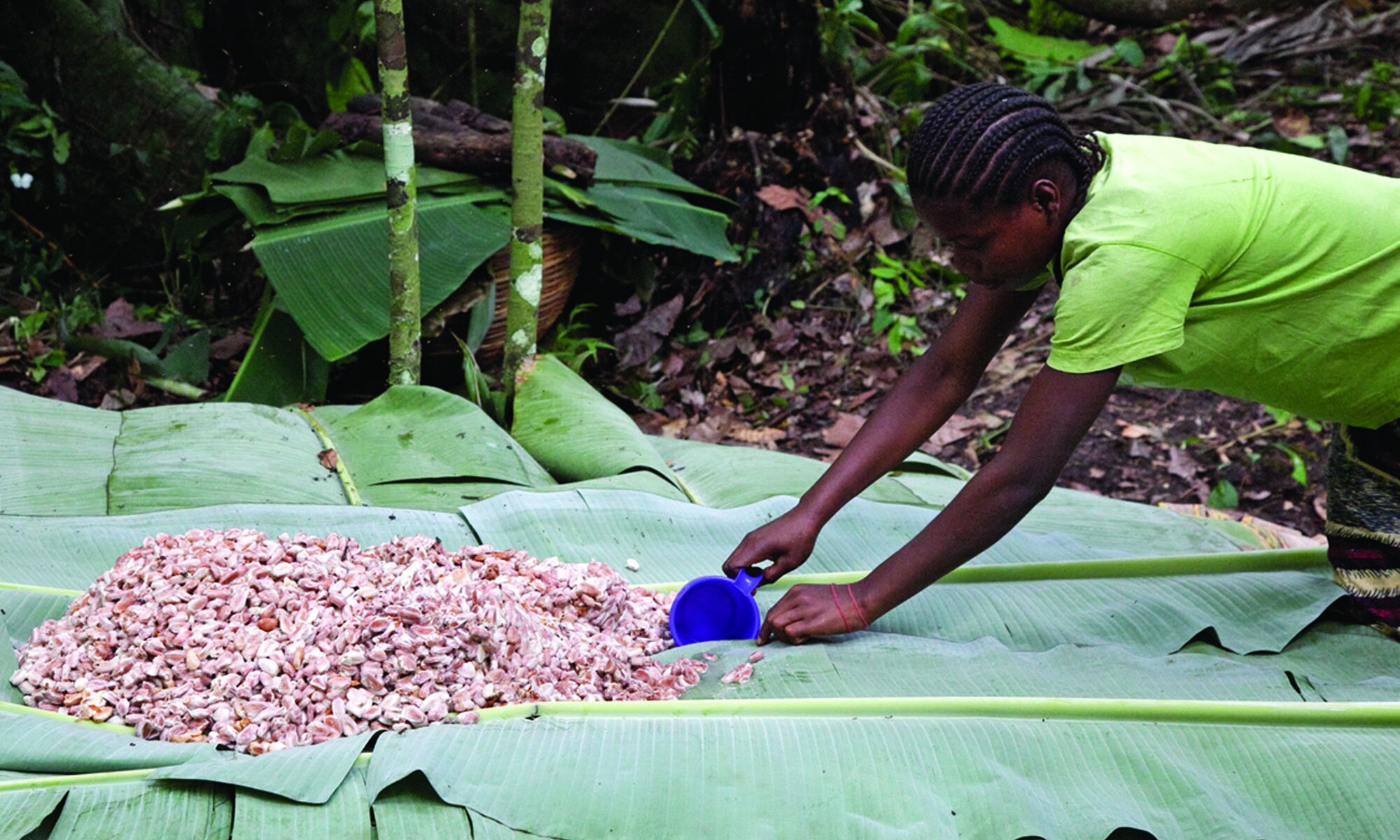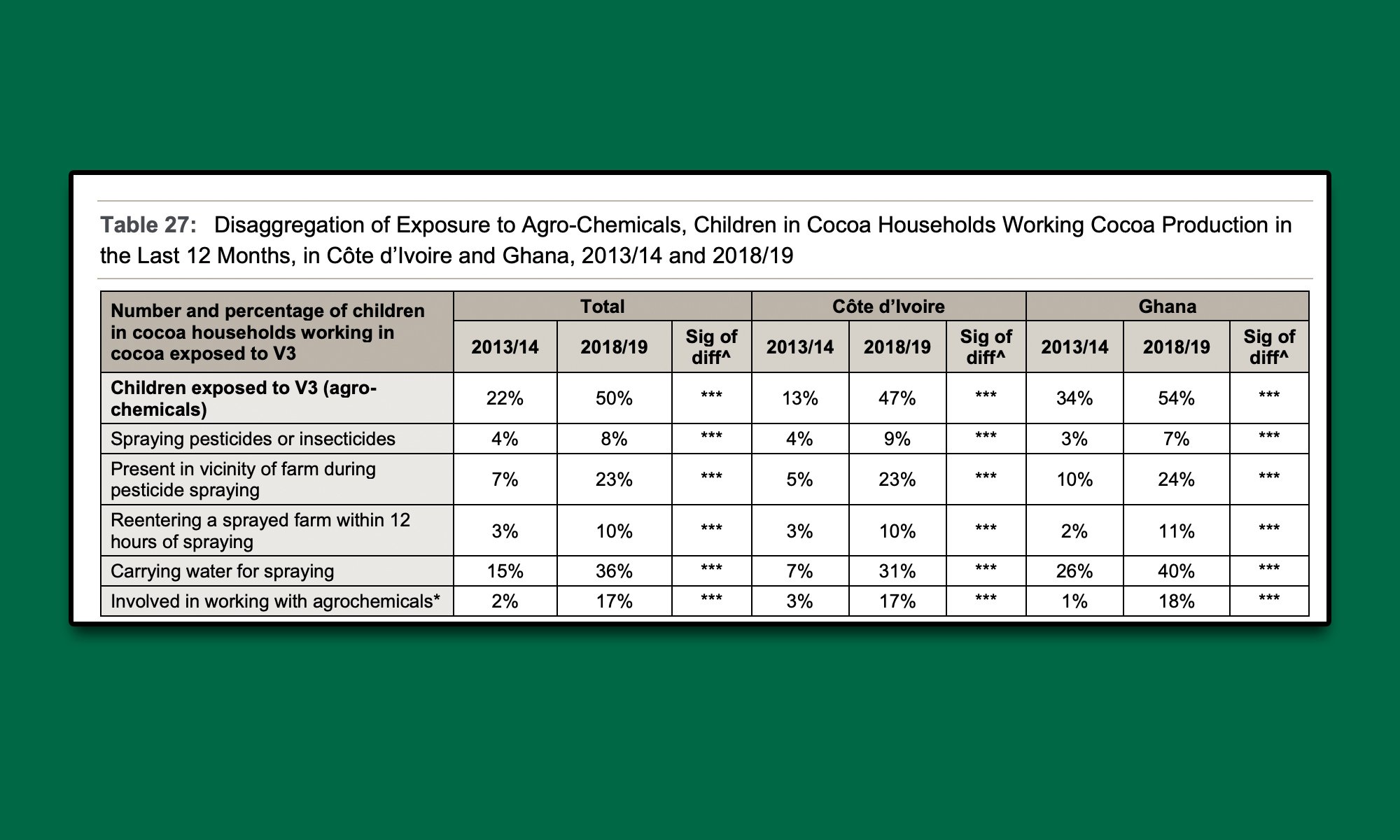Breaking Down the NORC Report on Child Labor in Chocolate Production
Over half the world’s cocoa supply comes from West Africa - with the majority coming from Côte d’Ivoire and Ghana. Research funded by the United States Department of Labor (USDOL) estimated that over 2 million children were engaged in labor related to the cocoa sector in 2013-14.
The National Opinion Research Center at the University of Chicago (NORC) published a report in Oct. 2020, comparing the prevalence of child labor and hazardous child labor in cocoa production from the 2008-2009 harvest season to those of 2013-2014 and 2018-2019. Using data from agricultural households in the cocoa growing areas of Côte d’Ivoire and Ghana that house at least one child aged 5-17, the report’s goal is to assess if there has been a reduction in child labor in the chocolate industry.
According to The Washington Post, “The findings represent a remarkable failure by leading chocolate companies to fulfill a long-standing promise to eradicate the practice from their supply chains.”
Child Labor & Cocoa Production in West Africa
The researchers found that in the past decade, cocoa production from Côte d’Ivoire and Ghana increased 62%. With this much of an increase in production, it makes sense that the households cultivating cocoa shot up to 53%.
The latest data from 2018-2019 found that 1.56 million children were involved in cocoa production labor. The count is approximately 790,000 children in Côte d’Ivoire and 770,000 in Ghana and of those, approximately 1.48 million children were exposed to at least one component of hazardous child labor in chocolate production.
The prevalence of child labor among all agricultural households increased 14%, while hazardous child labor increased by 13%.
Hazardous Child Labor & Chocolate
Having just passed the 20 year anniversary of the Harkin-Engel Protocol, an agreement between governments and the cocoa industry promising to eliminate only the worst forms (not all) of child labor, it is clear that the agreement is not being taken seriously.
Hazardous child labor means a child is participating in work that is dangerous or is taking place in unhealthy conditions that could result in that child being killed, injured or made sick. This could mean the place of work has poor safety and health standards or the work itself could potentially cause harm. Often health problems caused by these environments do not show up until the child is an adult.
The study found some of the activities resulting in these hazardous conditions include the use of sharp tools, land clearing activities, working long hours or at night and exposure to agro-chemical products.
The most prominent change in hazardous child labor is in exposure to agro-chemicals which increased by 15 percentage points (from 10% to 27% in 2018-19).
Child Cocoa Farmers & Exposure to Chemicals
The report found exposure to agro-chemicals became more pervasive between 2008-09 and 2018-19. The proportion of children exposed to chemical products increased approximately five times as much between 2008-09 and 2018/19, from 5 percent to 24 percent. Similar trends were found in both countries, with exposure to agro-chemical products increasing from 4 percent to 19 percent in Côte d’Ivoire and from 7 percent to 32 percent in Ghana. This increase is aligned with findings showing a significant increase in agro-chemical use among cocoa growing households between 2013-14 and 2018-19.
A child is exposed to agro-chemicals if the child is engaged in spraying, carrying water for spraying, or working with agro-chemicals during the reference period. Working with agro-chemicals includes a child having been involved in handling agro-chemical products such as purchase, transport, storage, mixing, loading, washing of containers and spraying machine, and/or disposal.
The usage of argo-chemicals and increased cocoa production are related. Households that are using more agro-chemicals in their cocoa production practices. Households in Ghana reported that government-subsidized inputs and mass spraying efforts resulted in more consistent agrochemical use on farms. Households in Côte d’Ivoire and Ghana reported that good agricultural practices training significantly changed their cocoa production practices, as they were encouraged to use agrochemicals to maximize yield and manage diseases and pests.
Other Key Findings
In 2018-19 84% of agricultural households in Côte d’Ivoire and Ghana were growing cocoa.
School attendance among children in agricultural households in cocoa growing areas increased from 58 to 80 percent in Côte d’Ivoire and from 89 to 96 percent in Ghana between 2008-09 and 2018-19.
While the rate of child labor did not increase in high cocoa production areas, it increased substantially in low and medium production areas between 2008-09 and 2018-19. There was a similar trend in the change in prevalence of exposure to hazardous work during the same period.
The most prominent change in hazardous conditions was an increase in agro-chemicals exposure which went from 5% to 24% in the 10 year period.
When multiple interventions were implemented in a community, they led to a statistically significant reduction in the rates of child labor and hazardous child labor in cocoa production.
Recommendations Based on Findings
Engage community leaders, including representatives for women and youth, early in the design of interventions to ensure that objectives and implementation plans are realistic and relevant to the community.
Form relationships with government partners at national and regional levels so they are well-positioned to move intervention activities forward.
Maintain and participate in national action plans and steering committees on child labor and child protection.
It is worth noting that this study does not cover forced child labor, child slavery or child trafficking which is still existent in cocoa production.



